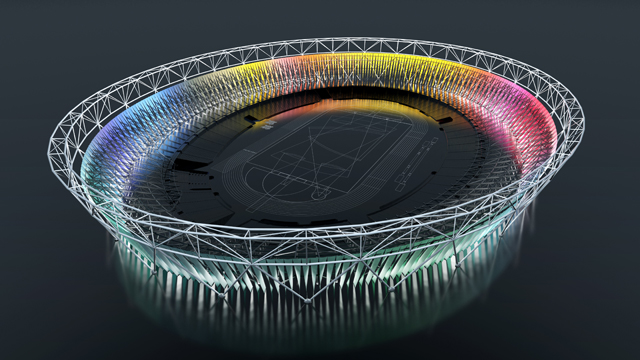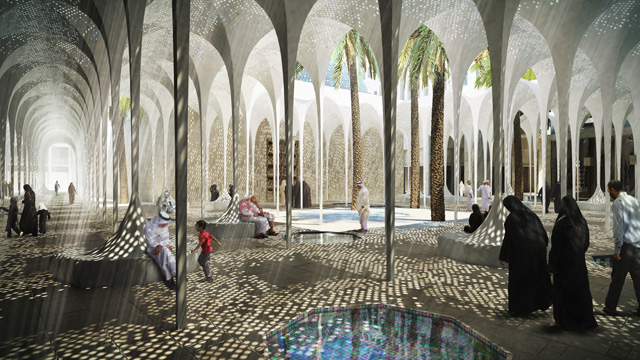THE CHRONICLES OF SQUINT/OPERA

A CONVERSATION WITH JULES COKE written by Federico Giacomarra and Fabrizio Bellabio.
The first time I saw it was 2002, I had just arrived in Rome. It’s been almost ten years but I remember it as if it were today, so was the astonishment and disquiet at the sight of a so powerful and wonderful creature. I was at home alone,in the kitchen drawing by hand, dipped in a fresh afternoon of April, when taken out of boredom I decided to check the mail. Nothing new…just another Lubo’s email inviting me to check just another graphics and 3D animation “cool” link. What came out of the screen was an explosion of color and moving images intended to leave a deep mark in my eyes. Later I knew from the blog, the strange mythological creature born from the union of “Squint” (a trickster completely covered with tattoos able to change the world) and ‘”Opera” (a warrior creature with multiple eyes and ears heading an army of 3d animals) would deeply change the relationship between architecture and media. In the following years a large army took shape and from the early highly abstract videos, such as “All Barnsley Might Dream” and “Palestra” has reached the increasingly narrative and technically advanced language of “WTC Ground Zero” and “Olympic Stadium”. The rest is legend …

FG+FB : Before we get to the topic of our discussion, it would perhaps be interesting to know under which circumstances Squint/opera come to life.
JC : At the beginning it was 4 of us of which only three had an undergraduate degree in architecture, at the Bartlett, whilst I studied something completely different: History in Latin and Greek. We were making documentaries, not necessarily about architecture, sort of art film documentaries. Then Olly’s dad, Will Alsop, gave us one of our first commissions for a project of his, the urban regeneration of Barnsley, a town in the north of England. Although the reward was very small, the film was very succesful and from then on, other people started to approach us.

FG+FB : How many are you today?
JC : Now we have an office in London with around 25 full-time employees and a dozen of regular contracters, a small division in Istanbul and another one in Melbourne, Australia. Generally our timelines tend to be quite short, like two or three months per job. Actually at least half of the people in the office have some kind of architectural background. Generally one could say we are a good mixture of 3D artists and 2D artists.

FG+FB : But would you consider your work to be related primarily to medias, and to architecture as a backdrop, or is it the other way around?
JC : To begin with, regarding the website, I must say that we’re about to collapse that division. Previously we thought that their juxtaposition could be misleading, or at least confusing to our clients. Although nowadays, it seems that everything is kind of converging, and not only architecture is starting to overlap with media, advertising and communications, but also within the world of communications itself, all sorts of different approaches are starting to overlap.

FG+FB : And how does this apply when it comes to “the job”?
JC : Well, first of all we usually work with three sets of people: architects, developers and local governments. For the most part, what they want is a mixture of films, still images, and maybe some interactive stuff for which they will have a brief; the brief would sound more or less like “we want to reach such and such an audience, we want this kind of brand, we want this kind of message”. Then, we would come back to them and propose the possible ways of achieving it.
FG+FB : Do people come with clear ideas of what they want, or are you an active part in developing the project?
JC : Usually we propose the storyboard and the key ideas, but we do that in collaboration with our clients. I think that the clear difference between us and some other companies that work in the similar field, is that a lot of other companies are just simply told what to do; whereas we’ve got a more strategic aspect in our work.

FG+FB : Your projects are often strategic devices to promote major developements, in order to seduce either potential investors or potential consumers. Do you have an opinion on this? Is there an ethics behind what you do?
JC : Good question. I think we probably do have an ethical position. I mean, we try to represent ideas in the truest light, so that people can judge for themselves. Though obviously, not every scheme that we work on is one that we believe in designwise, or even economically, but that often shows in the accomplishment of the project. It’s quite obvious. Let’s say you were making an advertisement for toothpaste, or a car. You wouldn’t necessarily believe in the toothpaste. I was just curious because some of the works in the Creative Medias section quite often deal with global issues like sustainability. I think a lot of our work, particularly the early work that we did, was all about stimulating discussions. Picture a City for instance, was designed to provoke discussion amongst the citizens about what they actually wanted the city to be. In this sense, you could see all of our work in the same light, as an attempt to provoke a discussion, be it Flooded London or Sowwah Island in Abu Dhabi.

FG+FB : How about the role of the “plot” in your works?
JC : The plot is the most important. Particularly when working within a linear format, like a three minute video; it’s very much like a card trick in terms of the effect that you want to have on the audience. You have to build up anticipation, in the same way that it is possible to perform a card trick in a way that isn’t entertaining, you can make a film that’s technically correct, but doesn’t have the desired effect. So, it’s quite obvious that there has been a shift from a more graphic-motion oriented representation to a more cinematographic one. I am refering particularly to the character of the Picture of a City series, where there was much more of an abstract collage touch. Well, we still do some of that, it just really depends on the clients. When we did a lot of that collage stuff, which was a few years ago, there was a lot more work going on in Europe and in the UK, and it was a style which was pretty fashionable at the time. The more cinematographic style has become quite popular since other parts of the world came to be involved. But I don’t think the style for us is particularly relevant; we mix styles according to what is best.
FG+FB : Do you think architecture can start a discussion? To which extent do you think architecture can affect society?
JC : I think that buildings actually do have a great effect on culture. But, at the same time people aren’t very much engaged in this discussion. Architects are, but people tend to look at a new building and just say “oh, that’s a new building”, and I think that’s where comunication has to come in to make some points. Not many people are interested in architecture, and that’s partly because of the way in which it’s written about. But I also think that by the way the industry works, probably only some 5% percent of the buildings around could be culturally interesting in some kind of way. People are just less willing to take risks to do something different, I suppose.
Related Posts :
Category: Article
Views: 3771 Likes: 0
Tags: Abu Dhabi , bartlett , Conversation , event , Fine Gael , ground zero , i have seen the future , interview , Melbourne , SQUINT/OPERA , Will Alsop
Comments:
Info:
Info:
Title: THE CHRONICLES OF SQUINT/OPERA
Time: 13 marzo 2012
Category: Article
Views: 3771 Likes: 0
Tags: Abu Dhabi , bartlett , Conversation , event , Fine Gael , ground zero , i have seen the future , interview , Melbourne , SQUINT/OPERA , Will Alsop






